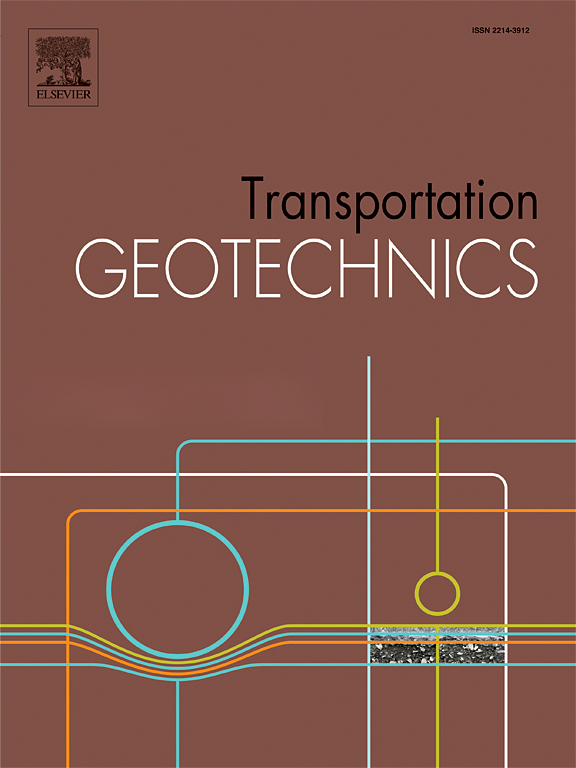Big data-driven global modeling of cohesive soil compaction across conceptual and arbitrary energies through machine learning
IF 4.9
2区 工程技术
Q1 ENGINEERING, CIVIL
引用次数: 0
Abstract
This study aims to propose an intelligent modeling framework for accurately predicting compaction characteristics of cohesive soils across compaction energy (CE) levels. A comprehensive database of 1001 observations falling within the theoretical bounds was created through experimental investigation encompassing sieve analysis, hydrometer analysis, liquid limit (wL), plastic limit (wP), specific gravity (Gs), and compaction tests on natural soil samples and literature review, encompassing diverse cohesive soils, CE levels, and compaction characteristics. Multiple machine learning techniques, including Extreme Gradient Boosting (XGBoost), Random Forest (RF), Gene Expression Programming (GEP), Multi Expression Programming (MEP), Artificial Neural Networks (ANN), and Multiple Linear Regression (MLR), were applied to develop predictive models. XGBoost demonstrated superior performance in predicting maximum dry density (γdmax) and optimum moisture content (wopt) as evaluated by statistical indicators and external validation and compared with existing models in the literature. The proposed models effectively captured the influence of key parameters, highlighting the primary role of CE and wL, the secondary role of plastic limit (wP), the tertiary role of plasticity index (IP) and fines activity (AF), and the quaternary role of soil gradation in predicting and influencing the compaction characteristics of cohesive soils. This approach enables accurate global modeling of cohesive soil compaction across varying CE levels, providing a valuable tool for geotechnical engineers and researchers to determine compaction characteristics for a known CE level using basic soil properties used for soil classification.
求助全文
约1分钟内获得全文
求助全文
来源期刊

Transportation Geotechnics
Social Sciences-Transportation
CiteScore
8.10
自引率
11.30%
发文量
194
审稿时长
51 days
期刊介绍:
Transportation Geotechnics is a journal dedicated to publishing high-quality, theoretical, and applied papers that cover all facets of geotechnics for transportation infrastructure such as roads, highways, railways, underground railways, airfields, and waterways. The journal places a special emphasis on case studies that present original work relevant to the sustainable construction of transportation infrastructure. The scope of topics it addresses includes the geotechnical properties of geomaterials for sustainable and rational design and construction, the behavior of compacted and stabilized geomaterials, the use of geosynthetics and reinforcement in constructed layers and interlayers, ground improvement and slope stability for transportation infrastructures, compaction technology and management, maintenance technology, the impact of climate, embankments for highways and high-speed trains, transition zones, dredging, underwater geotechnics for infrastructure purposes, and the modeling of multi-layered structures and supporting ground under dynamic and repeated loads.
 求助内容:
求助内容: 应助结果提醒方式:
应助结果提醒方式:


